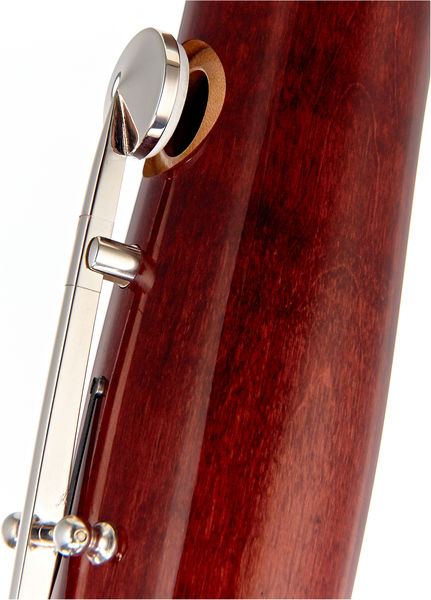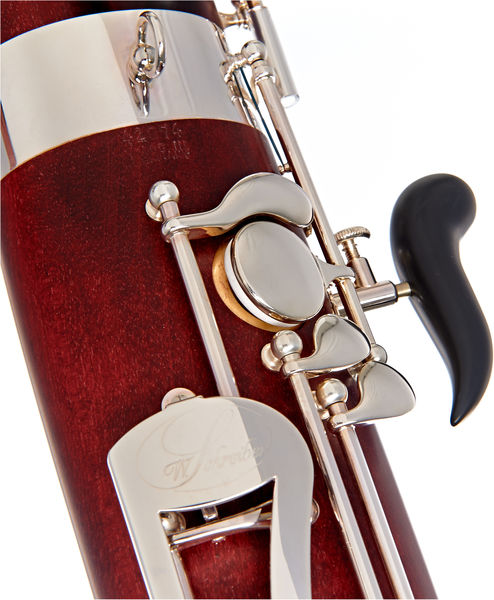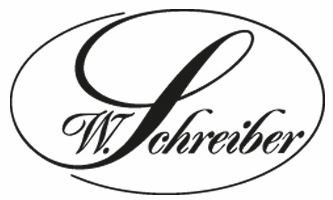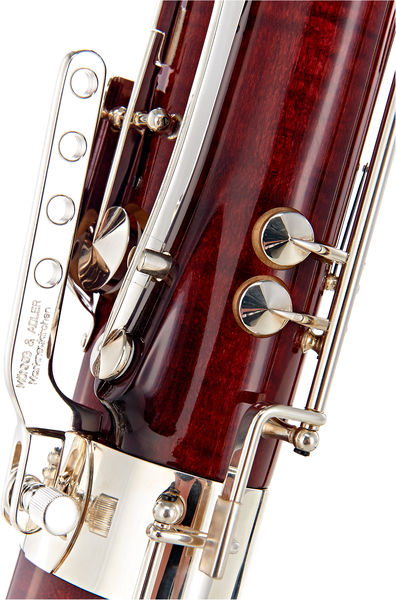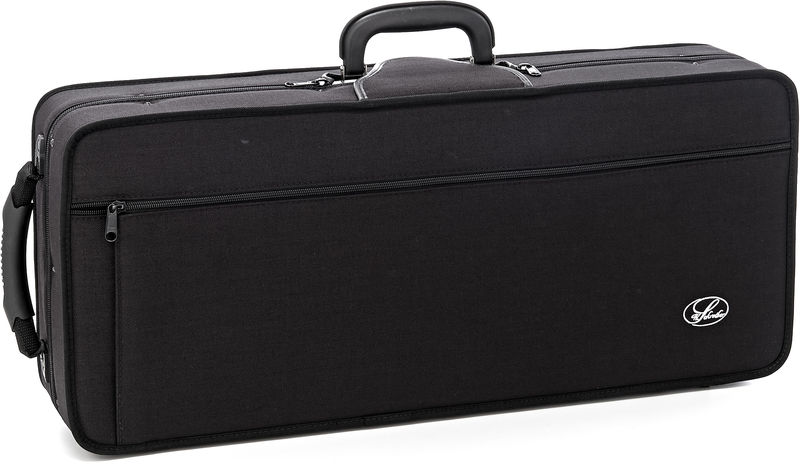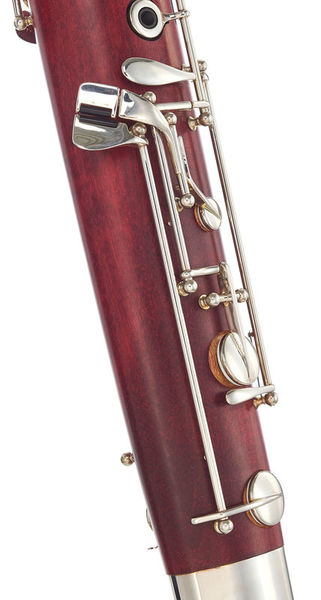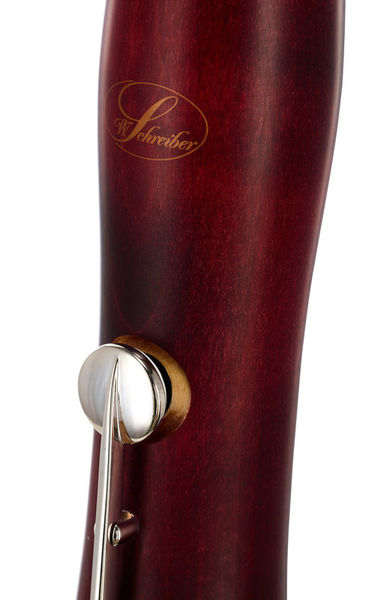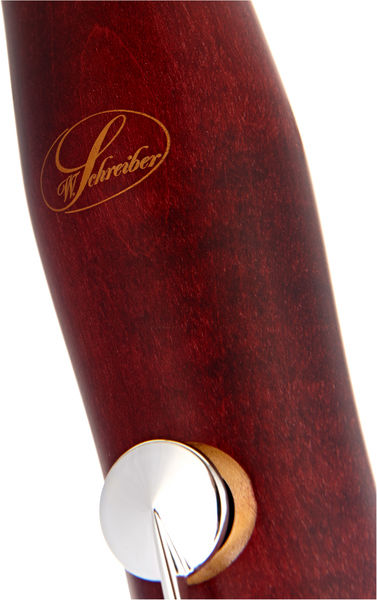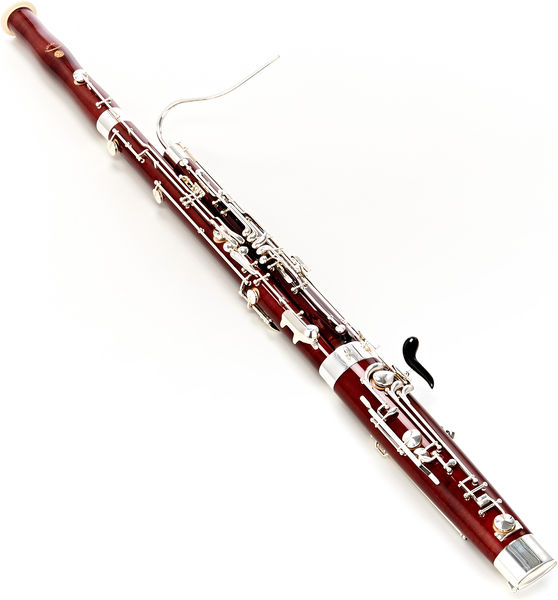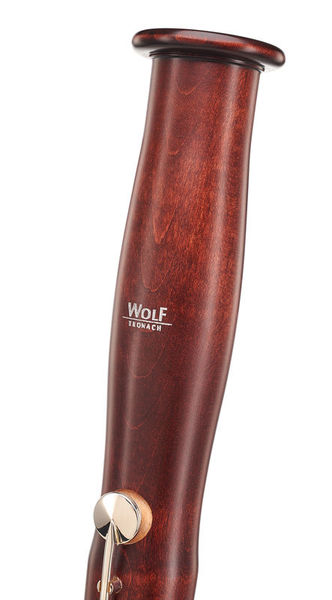Displaying 1-15 of 15 products
Oscar Adler & Co. Bassoon 1357/125 Anniversary
Bassoon
Limited jubilee bassoon, 23x Keys, 5x Rings, High D, Double C-handle, Thumbs off flap, High gloss silver-plated machine heads, Painted body, A...
Schreiber WS5016-2-0 Bassoon
BassoonThis bassoon has a standard key system. From this model upwards all instruments have a whisper key lock, a second ring-finger Bb key and and C# trill key for the left hand index finger.
Conservatory Model, Standard size, German system, Sycamore maple wood, 25 Keys, High D key, 2 S-bends, Silver-plated mechanisms, Includes case and...
Oscar Adler & Co. Bassoon 1350 P Children Model
Fagot
Kindermodel met compleet pianomechaniek, Minimaal aantal kleppen voor gereduceerd gewicht, Laag massapunt, Verkorte greepafstanden, Tot lage-C,...
Guntram Wolf Basson S 2000
Bassoon
Made of long-seasoned sycamore maple from slowly growing layers, The wooden body is manufactured using various CNC machines for the highest...
Oscar Adler & Co. Bassoon 1361 Orchester Plus
Bassoon
27 Keys, 11 Rollers, High-D, High-E, As/B-Trill, Curved handles, High-gloss, silver-plated mechanisms, Complete with balance holder, 2 'Oscar Adler...
Schreiber WS 5013-2-0 Bassoon
Bassoon
Conservatory model, Standard size with child-friendly key mechanism, German system, Mountain Maple, 21 keys, High D-valve, 2 S-bow, Silvered...
Guntram Wolf Basson S 2000 Plus
Bassoon
From long-seasoned sycamore maple from slow growing locations, The S 2000 plus models use only specially selected woods, which give the instrument...
Guntram Wolf Fg 5 Plus Quint-Bassoon
Quint BassoonThe quint bassoon sounds a fifth higher than the normal bassoon. It is particularly suitable as a children's instrument.
Bassoonino in G, Modern mechanics, With complete piano mechanics and F-F # connection, Sycamore maple with natural rubber lining, Length 84.5 cm,...
Schreiber WS5010-2-0GB Bassoon
Bassoon
Limited special edition, Made of aged grenadilla wood & selected sycamore maple, 22x Keys, Incl. high D-flap, Silver-plated machine heads, Stable...
Schreiber WS5017-2-0 Bassoon
Bassoon
Conservatory model, Special model - based on model 5016 except with the plateau key for left ring finger (like WS5013), Extended for both little...
Gebrüder Mönnig 214 Topas Bassoon
Bassoon
Professional model, Very easy response, Well suited for students and semi-professional players, 26 Keys, 8 Rollers, High-D, High-E, Double-Es keys,...
Schreiber WS5031-2N-0
Bassoon
Professional model, Specially selected sycamore maple wood, 25 Keys, 4 Rollers, High D key, Permanently closed piano mechanisms, High-gloss,...
Oscar Adler & Co. Bassoon 1358 Orchestral Model
Bassoon
26 Keys, 10 Rollers, High-D, High-E, E flat trill, High-gloss, silver-plated mechanisms, Aged sycamore maple, Complete with 2 'Oscar Adler & Co.'...
Oscar Adler & Co. Bassoon 1357 Student Model
Bassoon
Standard Version, 24x Keys, 5x Rings, High-D, 2. B-handle, Thumb As, High gloss silver-plated machine heads, Complete with 2 s-bows "Oscar Adler &...
Guntram Wolf Fg 5 Quint-Bassoon
Quint Bassoon
Quint bassoon with standard key system, The quint bassoon sounds one fifth higher than a conventional bassoon, It is especially suitable as a...
The Humble Beginnings Of The Bassoon
The bassoon is a large musical piece that gives off a low, rich and deep sound not found with other woodwind instruments.
Bassoons have a double reed attached to a small curved tube called a bocal and bassoonists require all ten fingers to play it, like the piano.
Of the woodwinds, bassoons are quite possibly the hardest to learn. Professional teachers or bassoonists often agree that previous musical experience would be a benefit when learning.
A Brief History Rundown About Bassoons
Bassoons date back to medieval times. The progenitor of the flute instrument was a clumsy instrument called the Pommer. It was constructed as a long conical tube made of wood with two holes.
These bassoons were often found in church choirs as a bass accompaniment. Early versions had no keys, and were very hard to play. During the Baroque period, however, they became very popular and even became favorite solo concerto instruments.
Unfortunately, while bassoons have developed overtime, the key system has not advanced much. During the 19th century, key systems were developed to make finger playing easier in all flute instruments, including bassoons, yet bassoonists today still have not accepted these advances, and seem content with the older, time tested systems.
The German key system, also known as the Heckel system, is the most popular key system today for bassoons. However, another system also exists along side Heckel, the French system known as the Buffet system.
The French and German bassoons are quite similar, but distinctive in sound. The French key system make the high notes much more accessible for the bassoonist than the German version.
